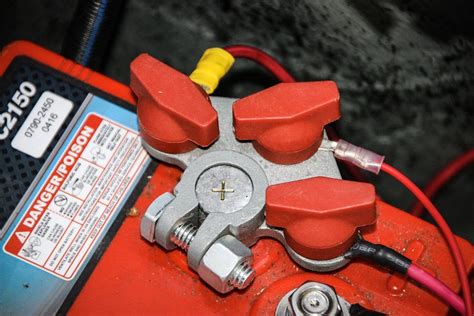
## Introduction to Multi-Connect Battery Terminals: A Comprehensive Overview ## In the realm of electrical connections, battery terminals play a pivotal role in ensuring the reliable flow of electricity between batteries and various electrical devices. Among the diverse types of battery terminals available, multi-connect battery terminals stand out as a versatile and efficient solution for applications requiring multiple connections to a single battery. This comprehensive article delves into the intricacies of multi-connect battery terminals, exploring their design, benefits, applications, and essential considerations for their effective utilization. ## Design and Construction of Multi-Connect Battery Terminals ## Multi-connect battery terminals, as their name suggests, are specifically designed to accommodate multiple electrical connections to a single battery. These terminals are typically constructed from high-quality conductive materials, such as copper or brass, to ensure optimal current flow and minimize resistance. The terminals feature a central stud or post that acts as the primary connection point for the battery's positive or negative terminal. Surrounding this central stud are multiple smaller terminals, also known as auxiliary terminals, which provide additional connection points for various electrical devices or circuits. ## Advantages of Using Multi-Connect Battery Terminals ## The use of multi-connect battery terminals offers several advantages over traditional single-connection terminals. These advantages include: * **Increased Versatility:** Multi-connect battery terminals allow for the connection of multiple devices or circuits to a single battery, eliminating the need for multiple batteries or complex wiring configurations. * **Simplified Installation:** By consolidating multiple connections into a single terminal, multi-connect battery terminals simplify the installation process and reduce the amount of wiring required. * **Reduced Space Requirements:** Multi-connect battery terminals are compact in design, requiring less space compared to multiple individual terminals. This is particularly advantageous in applications with limited space constraints. * **Improved Organization:** Multi-connect battery terminals help organize and streamline electrical connections, making it easier to identify and access individual circuits or devices. ## Applications of Multi-Connect Battery Terminals ## Multi-connect battery terminals find application in a wide range of industries and applications, including: * **Automotive:** Multi-connect battery terminals are commonly used in automotive applications to connect various electrical components, such as lights, starters, and ignition systems, to the vehicle's battery. * **Marine:** In marine applications, multi-connect battery terminals are employed to connect electrical systems, navigation instruments, and auxiliary equipment to the boat's battery. * **Industrial:** Multi-connect battery terminals are utilized in industrial settings to power machinery, control systems, and monitoring equipment. * **Renewable Energy Systems:** In renewable energy systems, multi-connect battery terminals are used to connect solar panels, wind turbines, and energy storage batteries to form a reliable power source. ## Essential Considerations for Using Multi-Connect Battery Terminals ## When selecting and using multi-connect battery terminals, several key considerations must be taken into account: * **Current Rating:** The current rating of the multi-connect battery terminal should be carefully selected to ensure it can safely handle the maximum current draw of the connected devices. * **Voltage Rating:** The voltage rating of the multi-connect battery terminal should be compatible with the voltage of the battery being used to prevent damage or overheating. * **Stud Size:** The size of the central stud or post should be appropriate for the gauge of wire being used to make the connections. * **Stud Material:** The material of the central stud should be compatible with the type of battery being used to avoid corrosion or other adverse reactions. * **Auxiliary Terminal Quantity:** The number of auxiliary terminals required should be carefully considered to ensure there are sufficient connection points for all the intended devices. * **Insulation:** Multi-connect battery terminals should be properly insulated to prevent accidental short circuits or electrical shocks. ## Conclusion: Multi-Connect Battery Terminals - A Versatile and Efficient Solution ## Multi-connect battery terminals offer a versatile and efficient solution for applications requiring multiple connections to a single battery. Their compact design, simplified installation, and improved organization make them a preferred choice in various industries and applications. By carefully considering factors such as current rating, voltage rating, stud size, stud material, and insulation, users can ensure the safe and reliable operation of multi-connect battery terminals in their respective applications.